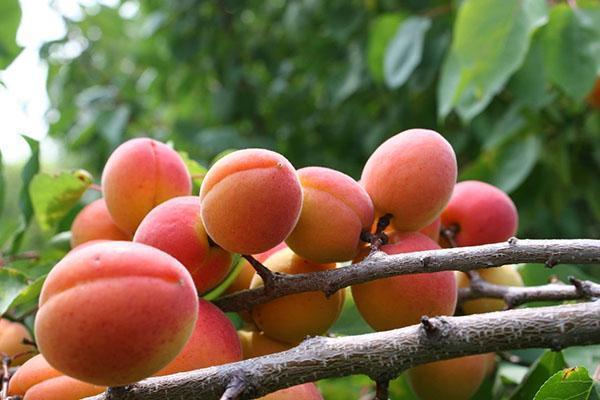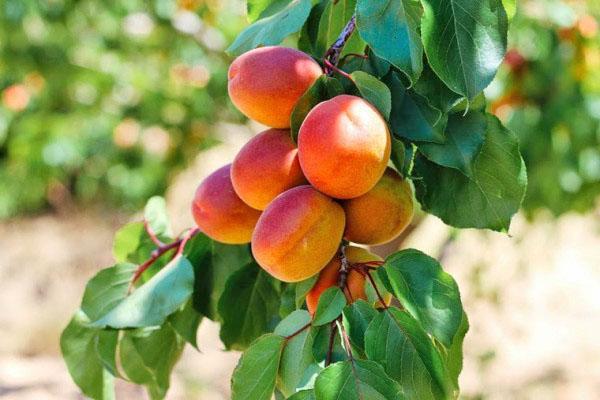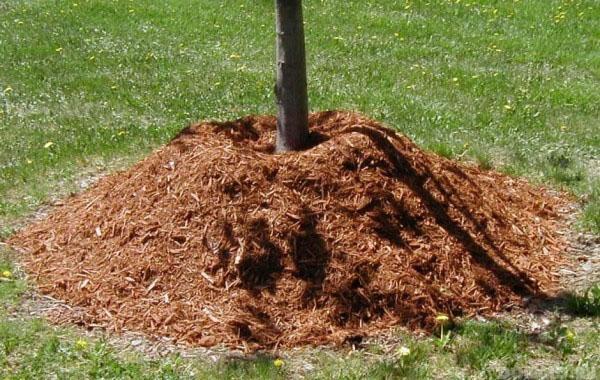Unpretentious winter-hardy apricot varieties Krasnoschekiy
 If you are deciding which fruit to plant in your garden, then you should pay attention to the Red-cheeked apricot. A description of the variety of this fruit tree and tips for caring for it will help you successfully grow a seedling. This type of apricot is highly valued for its survival rate in not the most favorable climatic conditions.
If you are deciding which fruit to plant in your garden, then you should pay attention to the Red-cheeked apricot. A description of the variety of this fruit tree and tips for caring for it will help you successfully grow a seedling. This type of apricot is highly valued for its survival rate in not the most favorable climatic conditions.
Description and characteristics of fruits

Due to its properties, Red Cheek is actively used for breeding. The most famous varieties bred with its help are Nikolaevsky and Nikitsky.
There is a claim that this variety can only grow well in the southern regions. Indeed, he loves warmth, and a photo of Krasnoshchekiy's apricot fruits ripened in the south may differ favorably in size from those grown in the Moscow region. However, with proper care, you can grow a fruit tree in almost any region of our country, at the same time, no worse than its southern "brother".
Red-cheeked fruits are yellow with bright orange, almost red blotches. Their size is not the largest, which is more than compensated by taste. Juicy pulp has a slight sourness that complements the original taste. By the way, thanks to the reddish "cheek" of the ripe fruit, this species got its name.
Fruit weight is about 50 g, and the skin is velvety. During the season, the tree can bring up to 100 kg of harvest, which begins to ripen in the middle of summer. It is best to collect it in several passes.
Planting and leaving
 Fruit trees require a lot of light to grow. Plant the Krasnoshchekiy apricot on a hill so that the melt water in the spring does not erode the roots. Make sure there is plenty of space around the tree and that buildings and large plants do not cast a shadow over the seedling.
Fruit trees require a lot of light to grow. Plant the Krasnoshchekiy apricot on a hill so that the melt water in the spring does not erode the roots. Make sure there is plenty of space around the tree and that buildings and large plants do not cast a shadow over the seedling.
There are no special requirements for the soil, however, if there is increased acidity, add lime to the soil.
Dig a hole a little more than half a meter in diameter and depth. Mix the soil with organic fertilizers. It is not necessary to deeply dig in the seedling; it is enough to bury it so that the rhizome is closed. Tamp the near-stem circle with your feet, so you compact the earth around the roots. Then add mulch to slow weed growth.
The most favorable time for planting is the second half of spring, or mid-autumn. Red-cheeked is a self-fertile apricot variety, therefore, the description of the planting process does not include the obligatory planting of pollinators. However, experience shows that the yield of the tree will be higher if several more of the same are growing on the site.
Place gravel on the bottom of the pit for better drainage.
 In addition to a seedling, you can plant a seed, it is also possible to grow an adult tree from it. The process is simple and consists of just a few steps:
In addition to a seedling, you can plant a seed, it is also possible to grow an adult tree from it. The process is simple and consists of just a few steps:
- select overripe large fruits;
- fill the box with wet sand and dig in the bones (the procedure should be carried out at the end of January);
- place the box in the frozen ground, or in the refrigerator until spring;
- in April, plant them in prepared soil by analogy with seedlings.
There is another way to plant seeds in the second half of summer.It is called "out of the mouth". Immediately dig the pit from the freshly picked fruit shallowly into the ground and wait for germination.
Constant care for the apricot Krasnoshchek is not needed, but the basic manipulations will have to be performed. The variety requires abundant glaze, although it has good drought resistance. Take special care to keep the soil well moistened after planting and during lush growth, but at least 4 times per season:
- during flowering;
- in May;
- in early July;
- In November.
 Remember to prune your branches regularly in the spring, summer, and fall. This will increase yields and reduce the likelihood of disease. Fruit rot and mottling can often affect apricots, so treat Bordeaux mixture in the spring.
Remember to prune your branches regularly in the spring, summer, and fall. This will increase yields and reduce the likelihood of disease. Fruit rot and mottling can often affect apricots, so treat Bordeaux mixture in the spring.
 For the winter, the tree needs to be insulated. Wrap the bole with sacking, and drive stakes around. Then wrap them in foil, creating a kind of cocoon around the plant, which will protect it from the piercing wind and frost.
For the winter, the tree needs to be insulated. Wrap the bole with sacking, and drive stakes around. Then wrap them in foil, creating a kind of cocoon around the plant, which will protect it from the piercing wind and frost.
The description of the Krasnoshchekiy apricot variety indicates that it is excellent for planting throughout Russia. Frost resistance allows it to be grown in cold regions, while drought resistance prevents the plant from dying in hot climates. It is the undemandingness of the soil and resistance to many diseases that made this type of apricot so popular among professional gardeners.
You can grow fruits both for your own consumption and for sale. The fruits do not lose their taste for a long time during transportation, so there will be no problems with this.